In a “normal year”, we would be scouting V7 corn and R1 soybeans as shown below, but we do have some corn that was planted a month or more apart this year. Therefore, we need to be in a different frame of mind when scouting each field. The next couple of weeks is what I call the awkward “Junior High Stage” or the waiting period until corn pollination or R3 in soybeans. Here is what I am finding in the field:
Weeds
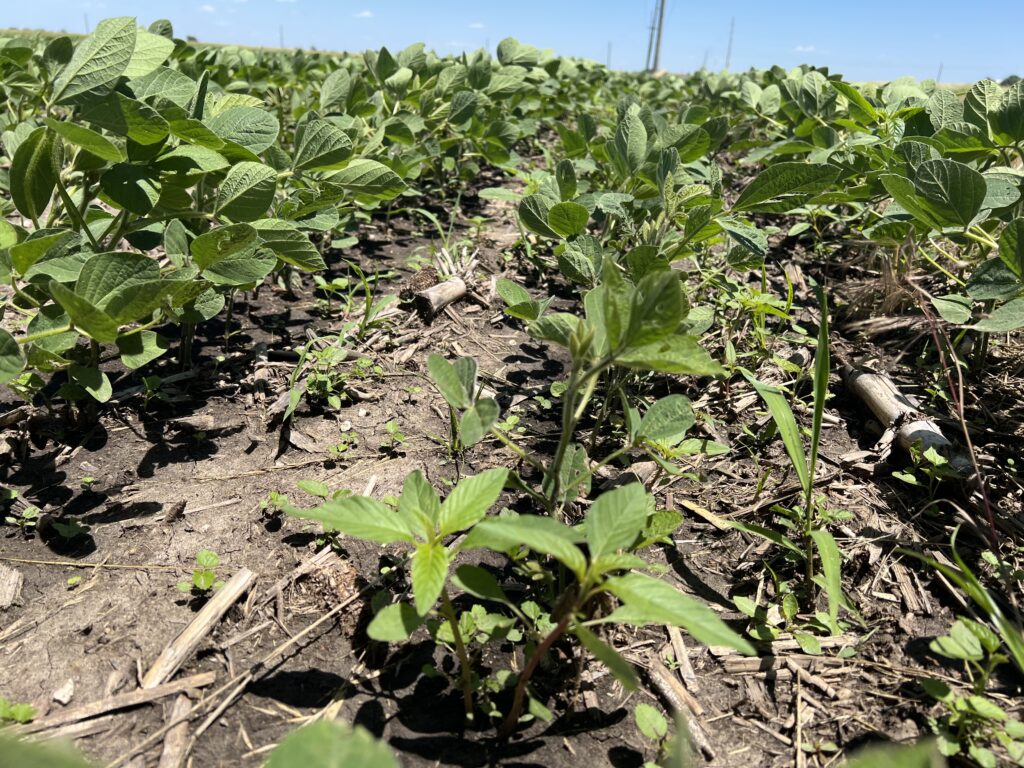
Weeds coming on strong in R1 soybeans.
Many growers had to wait until it was dry or not windy to apply a post herbicide application to early planted corn and soybeans. If you have not already, don’t wait too long, as weeds such as waterhemp are growing quickly. For example, Glufosinate should be applied up until R1. Enlist herbicide products need to be applied through R1 and weeds need to be shorter than 6 inches in soybeans. For more information, refer to the herbicide label or Enlist Application Guide.
When asked should I add or (spend money) on a residual for my post soybean application, my answer is a resounding yes. In fact, I conducted a poll on X and asked if others were going to add the residual with their post soybean application. The results revealed that 86% of 124 voters were indeed going to add the residual in with their soybean post herbicide application this year. Try to avoid yield loss due to tall weeds in your soybeans.

Insects
The bean leaf beetles have exited, but the Japanese Beetles will soon make their entrance in a field near you, so be on the look out. If we run across holes in corn leaves, we can pull out the whorl and check for insect larvae to identify the pest. Often times, we can find stalk borer, but in most years, it is not an issue. Borers have been boring or really not a big deal since the introduction of Bt hybrids in 1996. Since then Bt corn hybrids have effectively managed many different insect larvae and you can actually keep track of it all thanks to the Handy Bt Trait table for U.S. Corn Production. But in the world of pests, all good things could come to an end. Unfortunately, field-evolved resistance of European corn borer (ECB) is occurring in Canada and most recently Connecticut. Keep this information in your back pocket as you scout and you can read more in Blast from the Past: European Corn Borer is Back on the Radar. If you happen to run across ECB in Illinois, report to fieldcropinsects@illinois.edu.
Holes made due to an insect larva in corn
Diseases
If we would fill in the blanks on the current disease triangle, we know that it has been cool and wet, and if the disease is present and we have a susceptible host, we may see diseases such as bacterial blight in soybeans or a lot of Holcus spot which has been reported in corn. In general, bacterial diseases usually splash into a wound made by wind, sand/soil blasting, hail, as well as mechanical means. The key is that fungicides are useless against bacterial diseases.
Fungal diseases showing up during cool and wet conditions on lower leaves in V7 corn appear to be Anthracnose leaf blight and common rust. These fungal diseases don’t warrant a fungicide application. The moral of the story is that fungicides are not recommended at this time in corn. We also do not recommend fungicide applications after hail injury or for stalk rot suppression. However, I would be on the lookout for Tar spot as that most certainly could raise the alarm for fungicides in corn and don’t forget to download the Tarspotter app for that!
The different stages of Bacterial blight in soybeans
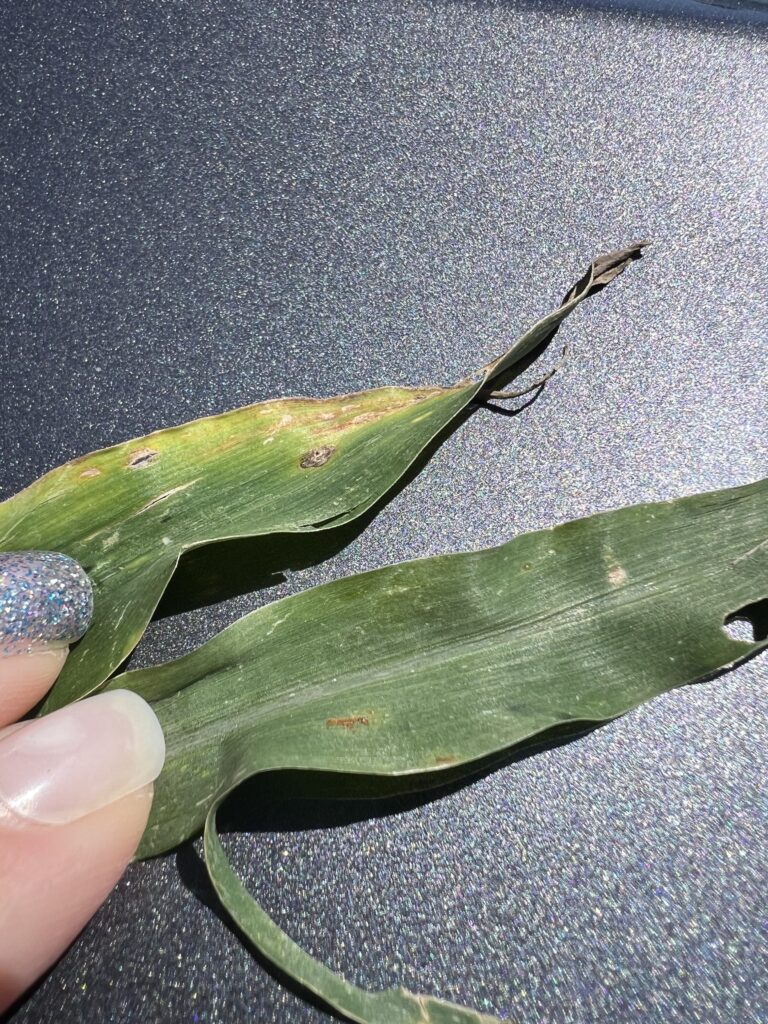
Anthracnose leaf blight (top) and common rust (bottom) starting to show up on lower leaves of V7 corn.
As always, for more updates, keep checking our ILSoyAdvisor Crop Report for crop scouting reports in a field near you!

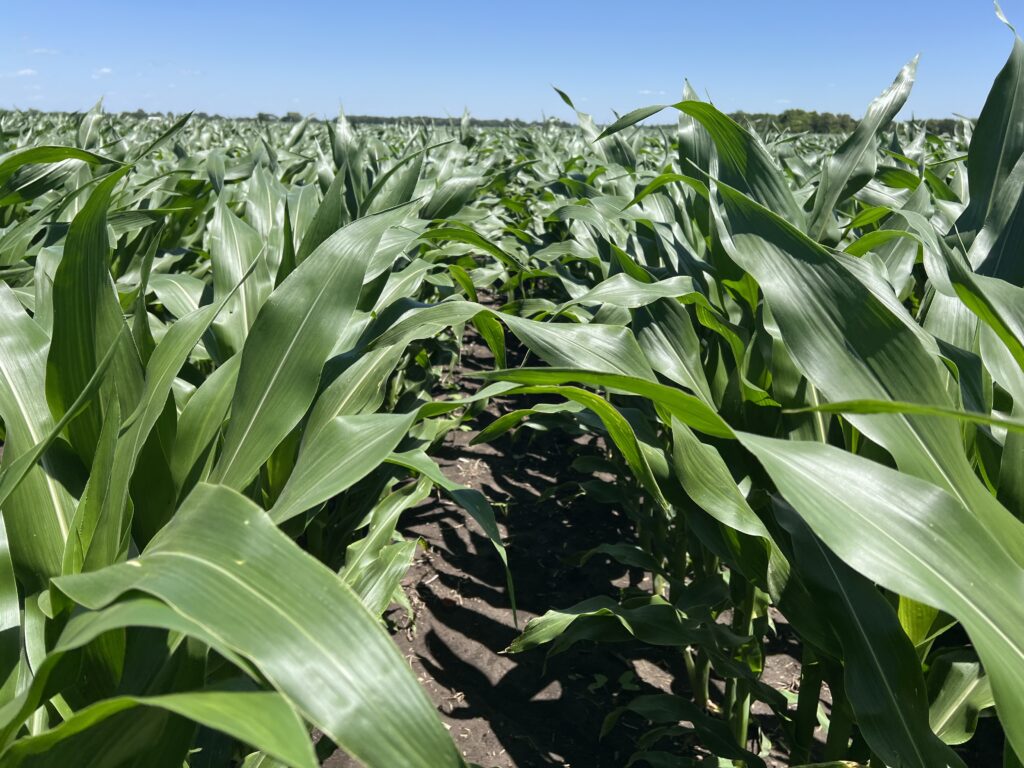
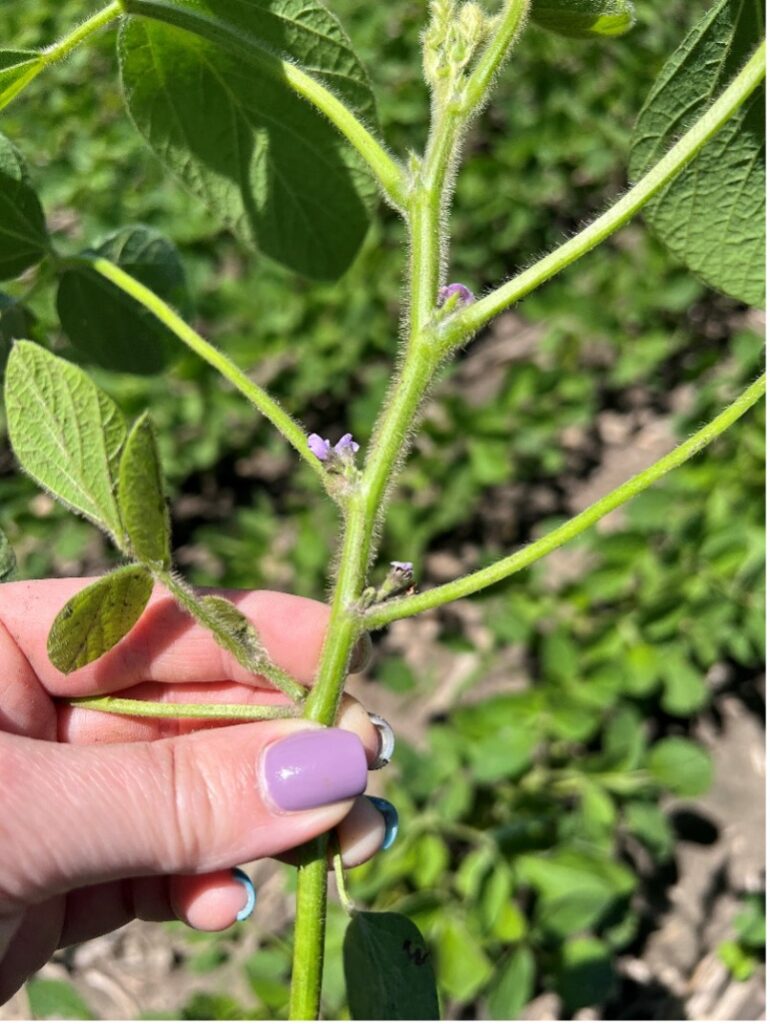


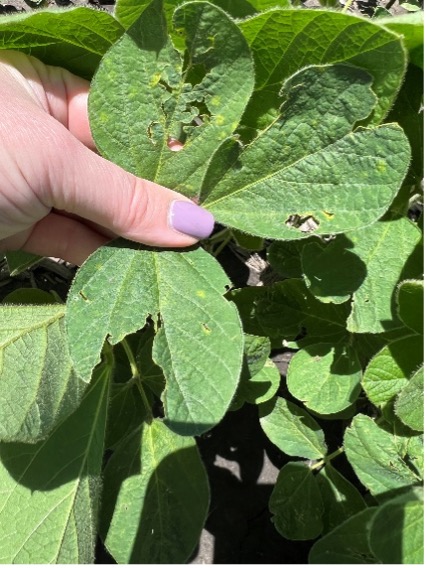
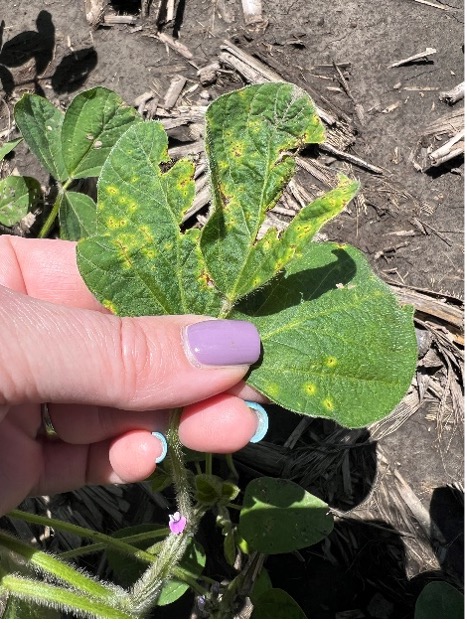
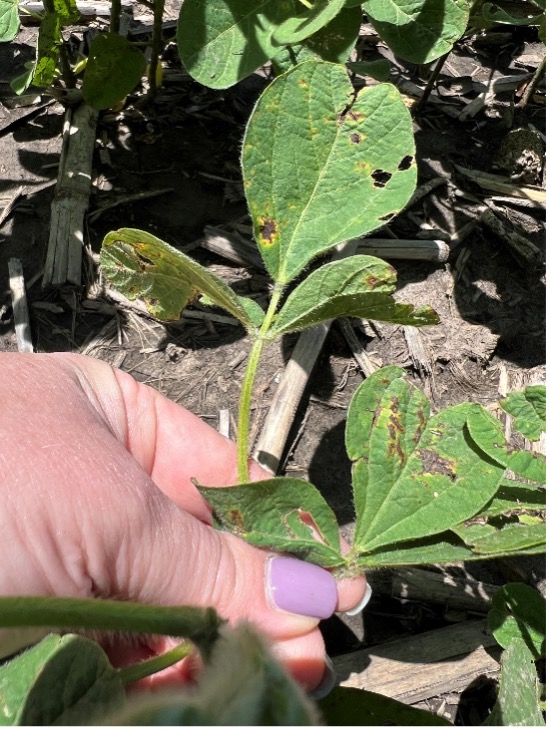

 and then
and then